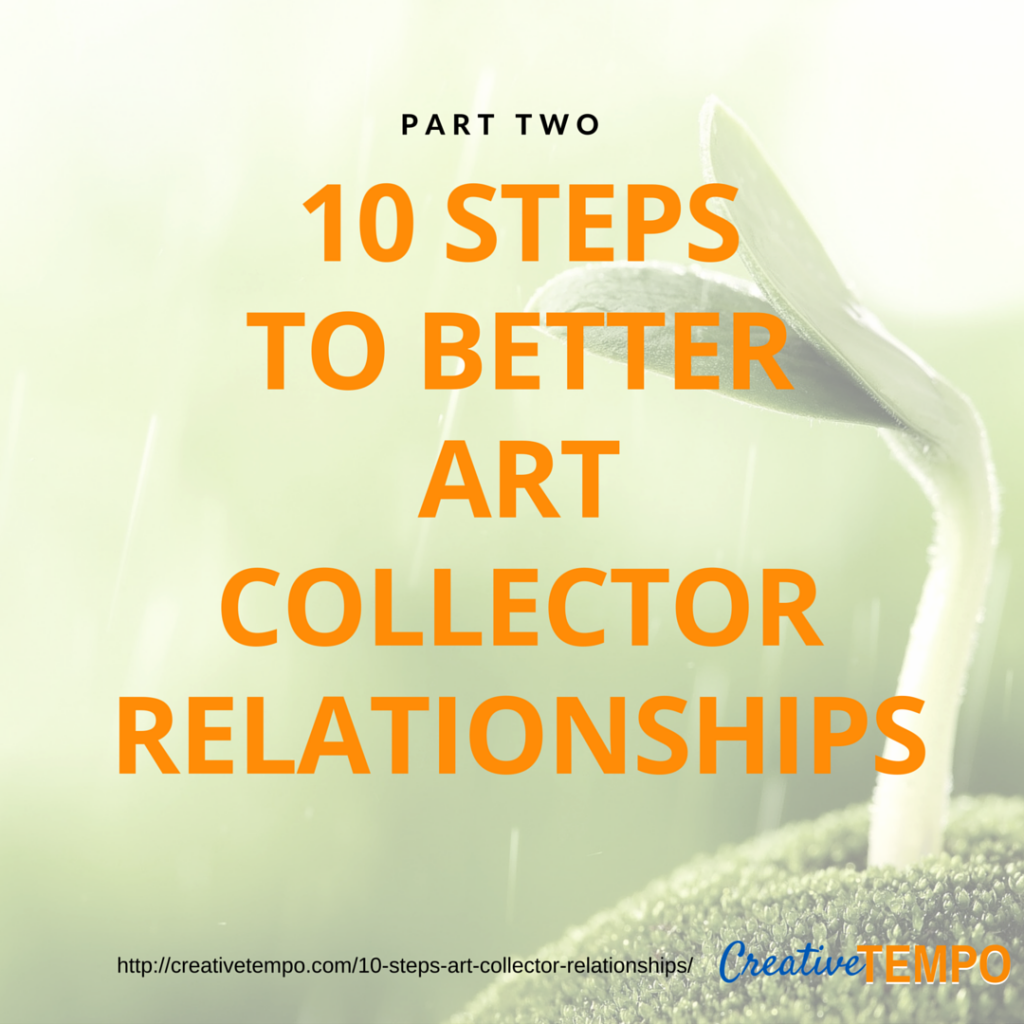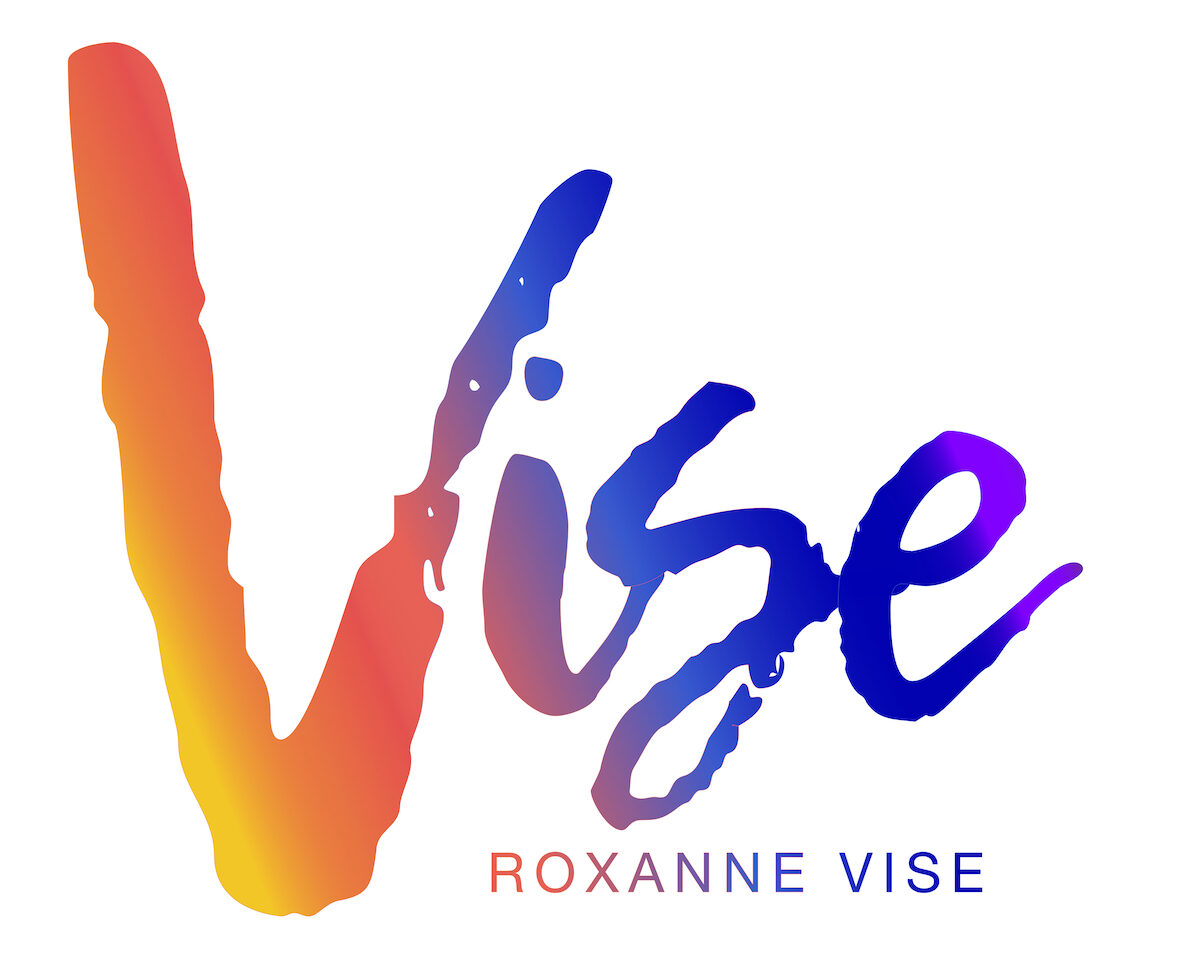
Relationships with your art collectors can be a breeze or feel painfully forced. If the time spent with them is easy, the sale feels natural – if it feels forced, you’re not enjoying the sale.
I’ll bet you can remember when you sold a piece where you enjoyed the conversation so much that you almost forgot to take the money – and another time when the process was unbearly slow and you couldn’t wait to scoot the new buyer out the door.
If the experience isn’t fun for you, how do you expect it to be anywhere close to enjoyable for your buyer?
Build a better relationship and keep your collectors happy by creating a great art purchasing experience for them and they will spend more with you over time and likely refer you to everyone they know.This is Part 2 of the series on Art Collectors. Read part 1 here where we talk about how to care for your collector’s and encouraged you to take action and make a list of 3 things you can do to nurture your current collectors.
People do business with those they know, like and trust. You don’t have to be best friends, but you do need to feel friendly. From the time someone first talks with you, to when they decide to make the purchase, you want to insure that their experience is delightful and easy – and friendly.
Let’s walk through 10 steps to building better relationships with your art collectors that you can start today:
Use this list to build your own process for how you take a buyer on the journey from your first words to satisfied collector.
- Start by Listening – Genuine caring about them. People want to feel seen and heard most of all.
- Good Communication – Make yourself reachable, answer your phone, check your voicemail and call back right away.
- Clear Quotes & Proposals – Have your paperwork ready to go so you don’t have to think about it. A purchase form, a commission agreement or proposal outline that you can adjust for each project and reduce the turnaround time. State what you’ll do, and also what’s NOT included. Make sure your contracts are clear about the scope of work. Get their favorite contact method and times and let them know how you will communicate with them and when. How quickly you’ll get back with them and your schedule if you have odd hours.
- Simple Payment & Paperwork – Make it simple to pay you! Artists especially can get funny when it comes to actually taking the money. But it’s just part of the process – you give art – you receive cash flow – you buy more supplies and give more art. Find out how your client likes to pay and make their favorite way easy. In other words, take multiple forms of payment and streamline your process so you’re not fumbling when it comes time to collect the cash. Collector experience doesn’t end when a person buys. Following up with a thank you and ensuring they’re happy with their purchase decision is crucial to helping them feel well treated and satisfied.
- Deliver on Your Promises – Do what you say you will and when you say you will. A great conversation and smooth agreement and payment process will disinegrate quickly if you don’t deliver on your promises. Make sure you commit to what you can actually do and give yourself a nice cushion that will allow you to delight and surprise them with something even better – better turnaround time or an added benefit they talked about. Go that extra mile. Give care instructions, a special cleaning rag, a business card to your favorite framer, offer to reconnect and clean the work for them in 6 months (another way to talk with them again.)
- Personal Touch – Consider sending them a thank you note for starting the project and express your excitement about working with them. Be on the lookout for things that they could benefit from. If they expressed and need for custom cabinet maker when you installed their piece, follow-up with your top referral for them.
- Human Touch – If you know a client is going through a rough time in their life, sending a note or care package can really touch them and make a lasting impression. Make notes in your planner about special days coming up for them and send a note about it.
- Smooth Out Trouble Spots – Listen first and when you respond and avoid playing the blame game. Don’t over explain or respond when you’re emotional. Clear agreements can avoid many misunderstandings. Multiple changes on a commission or tricky conversations can be avoided if you have it clearly outlined in your initial agreement. If you have trouble following through or remembering deadlines, get a system that will keep you on track, use online project management system like Trello or Asana or a white board in your studio – or a simple sheet with the project mapped out. Then put those special dates and deadlines onto your calendar and review them daily or weekly.
- Be Ready for Referrals – When you get a referral from a collector – have thoughtful thank you ready to go. Send a note with a gift card to a place you know they’ll love or even a percentage of the commission as a surprise. Wondering how much to give them? It’s an investment that’s well made. If a gallery made the sale, you would have paid anywhere from 30-50% so start with offering a referral of 5-15% or more as a way to surprise and delight your collector and encourage more referrals.
- Evaluating your conversations – This is your insider self-test where you go over how you’re doing in the collector relationship area. Weekly keeps you on track, once a month I’d say is the minimum.
To take the sweat out of writing your own email or letter here’s a template you are free to use to follow up your collector’s after the sale:
Sample Thank you email:Hi [Collector’s first name(s) ]Sending this quick email to say thank you! I enjoyed working with you on [details of the commission or project].I’m available for [re-hanging, cleaning, framing, shipping questions] or anything you need help with and would love to work with you again in the future.You’re included in my [name of newsletter, special invite, etc.] and will send you a note when [next opening, sale].I’m always looking for great people to work with, so if you have friends or clients that need [artwork, commissioned piece, details of what you want to do], please feel free to send me a note of introduction.Thank you and [closing note]
In Part 3 in this series about art collectors, you’ll discover how to make more sales with a simple collector follow-up system and grab the link to the cheat sheet to make it even easier.
Here’s the link to Part 1 if you missed it. If you like this free email template and post, share it and subscribe. It’s also free and I’d love to include you.
Subscribe > Mostly weekly… Always for you.


 How to Care for Your Art Collectors
How to Care for Your Art Collectors